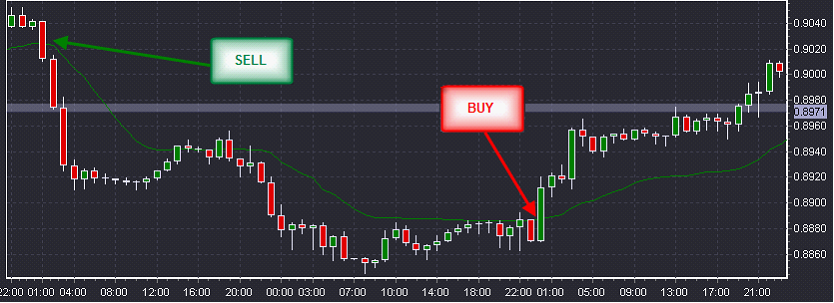The definite advantage of Perry Kaufman’s Adaptive Moving Average is its capability to respond to the market conditions changes. Unlike the other types of Moving Averages, Adaptive MA does not use a fixed Period value, but adjusts it depending on the price volatility.
Developed by Perry Kaufman, this indicator is a variation of the Exponential Moving Average. The smoothing constant ranges from a minimum of Fast Period to a maximum of Slow Period, depending of the nature of the price graph.
By adjusting the smoothing constant, the indicator adapts itself to the market volatility. It moves slower in the sideways market and faster in the trending market. Thus, the Adaptive MA helps to distinguish the trend right after it is formed, and does not give false signals on minor price moves.
Methods of use:
| 1. | When the instrument price rises above the Perry Kaufman’s Adaptive MA, it is a signal to buy. |
| 2. | When the price falls below the Perry Kaufman’s Adaptive MA, it is a signal to sell. |
| 3. | The direction of the Perry Kaufman’s Adaptive MA gives an idea of whether there is a bearish or bullish trend on the market. |
